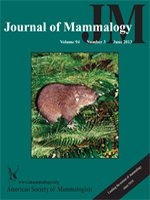The genetic structure of animal populations is influenced by, among other factors, dispersal and relatedness. Limited dispersal may cause local spatial restrictions in gene flow, which can have important management and conservation implications. We used radiotracking and genetic data to verify the existence of a spatial structure in relatedness within a resident native Eurasian otter (Lutra lutra) population at a fine spatio-temporal scale, and to better understand dispersal in this species. We obtained 51 individual genotypes from 65 biological samples collected from 2007 to 2010 in an area of southern Portugal of 1,125 km2. In addition, we radiotracked 7 (2 female, 5 male) young otters. Relatedness estimates and geographic distances were inversely related in females, whereas the relationship was not significant in males. Among the tracked subadult animals, only males dispersed, covering on average a distance of 21 km (SD = 6 km; range: 11–25 km). Both genetic and field data therefore revealed male-biased dispersal and suggested female philopatry. The observed overall pattern of genetic structuring was up to a scale of 21 km, although no putative landscape barriers were present. These findings concur with the few others previously available, indicating how restricted contemporary gene flow may occur at fine spatiotemporal scales within continuous carnivore populations, and can therefore constitute a cryptic cause of risk (being driven by mechanisms not necessarily related to the movement capabilities of the species), adding complexity to the conservation and management of these animals.
How to translate text using browser tools
1 June 2013
Fine-scale population genetic structure and short-range sex-biased dispersal in a solitary carnivore, Lutra lutra
Lorenzo Quaglietta,
Vania C. Fonseca,
Petra Hájková,
António Mira,
Luigi Boitani
ACCESS THE FULL ARTICLE

Journal of Mammalogy
Vol. 94 • No. 3
June 2013
Vol. 94 • No. 3
June 2013
conservation genetics
dispersal distances
Eurasian otter
isolation by distance
radiotracking
restricted gene flow
spatial relatedness structure




